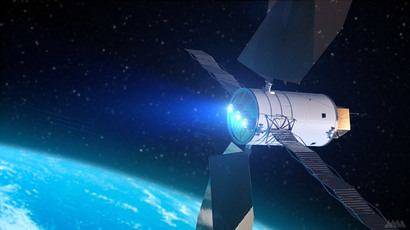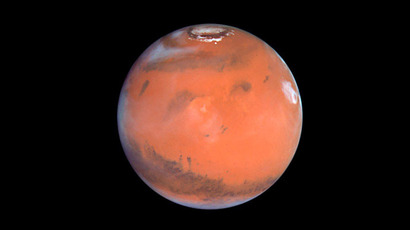‘Tastes like liver’: Russian scientists to develop farms of giant snails for future Mars settlers
A Siberian bio-research institute has proposed growing massive gastropods to feed future human missions to Mars and the moon, so astronauts avoid protein deficiency. Silkworms are also on the menu.
“Two-thirds of the proteins a cosmonaut consumes in space should come from animal sources,” Vladimir Kovalev, a senior researcher at the Institute of Biophysics in Krasnoyarsk, told RT. “But on an extraterrestrial base, space is limited, and keeping cattle is impossible.”
Established to support the Soviet space program, the Institute of Biophysics has been developing self-sustaining, and self-regenerating habitats for over four decades. According to a paper published earlier this year in the Journal of Siberian Federal University, it has developed a biosphere for giant African snails that is 97 percent self-sustaining, meaning that future space explorers will have to do little else but harvest the snails, and eat them, occasionally feeding them roots, peel and other parts of plants unfit for human consumption.
“You would need a colony of about 700 to 800 snails to feed a single person,” says Kovalev. “On an average day a settler would eat 100 to 150 grams of snail meat, though it would be safe for them to consume as much as half a kilo.”
READ MORE: 'Go to Mars’ and drop the asteroid mission, NASA advisors say
The giant African snail, or the achatina fulica, is a particularly meaty mollusk, capable of growing to over eight inches in length during its lifecycle of over 10 years, during which it constantly grows bigger, feeding on almost everything in its path. Back on earth, it is most commonly regarded as a pest, and a vehicle for spreading disease.
And while the slimy species is also considered a niche delicacy, and even a pet, in south-east Asia, just how palatable would they be to those who did not grow up on a diet of escargot?
“We’ve tried this ourselves. The taste is acceptable, though it is not as good as meat,” says Kovalev.
“The ones we have been growing taste somewhat like liver,” Nikolay Manukovskiy, another researcher at the institute stated in a press release accompanying the article.
READ MORE: Russia develops simulation system to imitate Mars atmosphere – report
With their proposals, the Russian scientists are navigating an existing trail. Similar snails have been tested as potential candidates for space travel since the early 1990s with experimental journeys to the Mir Space Station, and subsequently, the ISS.
Japanese scientists, including those working for the national space agency JAXA, have also proposed insects as a staple of the space diet for the past decade, with a recent report offering up a menu of “bee, grasshopper, snail, fly and termite” as well as silkworm. Also endorsed by the Siberian institute, the silkworm appears to be the star of any potential space settlement, as it can be used to fertilize plants, make clothes and provide a rich source of essential amino acids.
But while the land-based growers are ready to populate their experimental insect colonies, the main practical obstacle appears to be the actual manned trip to Mars. While the Mars One project has grabbed headlines for the past five years with its plans to establish a permanent colony on the Red Planet by 2026, the proposal is still sketchy on the technological and funding specifics necessary to make the ambitious date feasible.














